These Matcha White Chocolate Cookies with Almond Flour have a crisp outside and soft, chewy inside – a cookie and matcha lover’s dream. If you like matcha, you'll love these gluten-free cookies!
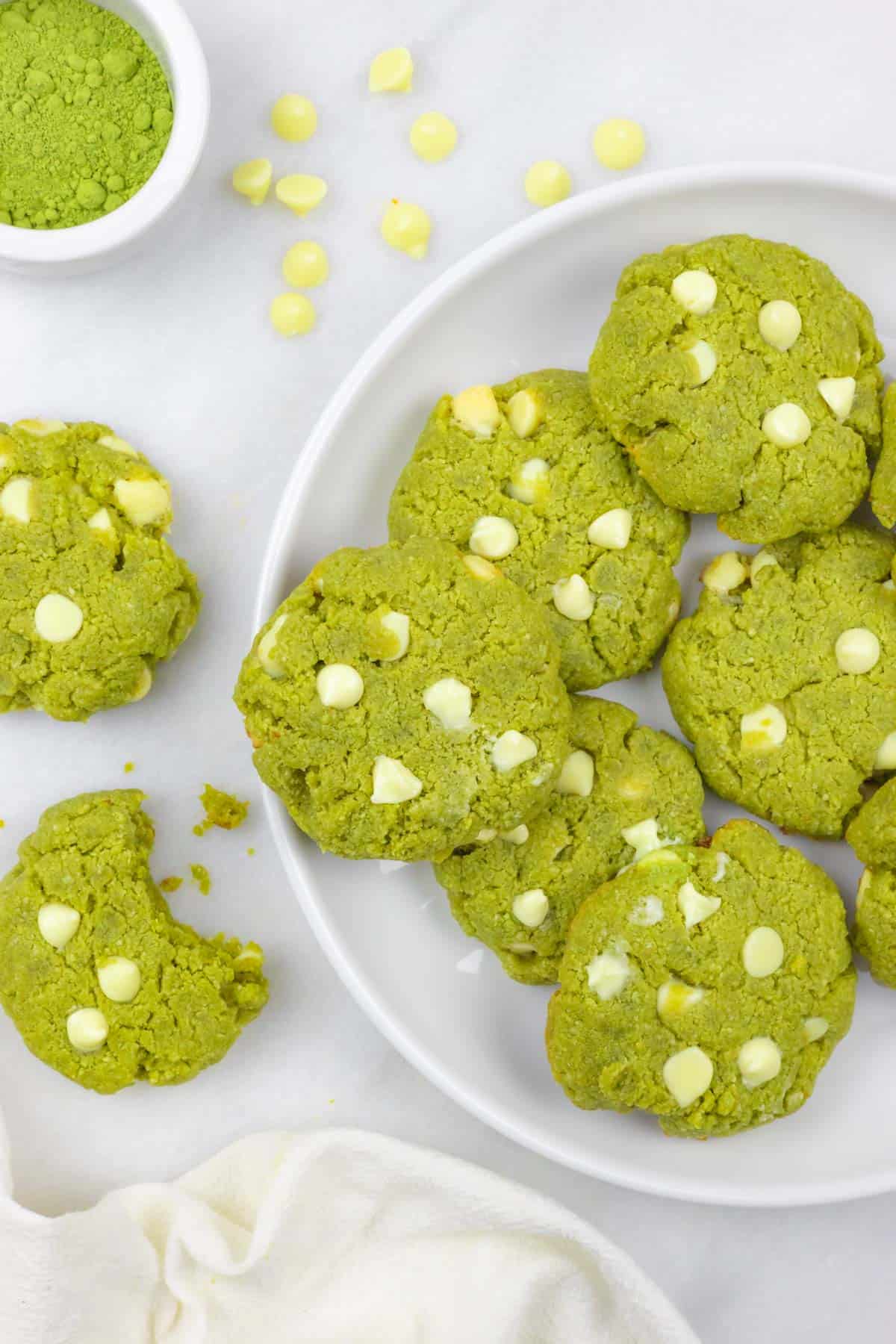
Jump to:
- Why you'll love this recipe
- What is matcha?
- Matcha varieties
- Is matcha FODMAP-friendly?
- What does matcha taste like?
- How to make matcha taste good
- Matcha tea benefits
- Ingredients
- Why do you need to sift matcha powder?
- Instructions
- Variations and add-ins
- How to store
- FAQ
- Other recipes you might like
- 📖 Recipe
- 💬 Comments
Matcha and white chocolate were meant to be together. These cookies are light and crisp with a perfect chewy center that melts in your mouth and leaves you wanting another. Since these are healthy, keto, gluten-free, sugar-free cookies, you can feel good about indulging in more than just one.
If you are a fan of white chocolate, I also recommend this fast, no-cook White Chocolate Rocky Road for a colorful and decadent treat.
These are perfect green food for St. Patrick’s Day! Matcha chocolate chip cookies make a perfect St. Patrick's Day dessert. These are a delicious holiday cookie and are a favorite for holiday gifting because they’re so pretty and amazingly good. The white chocolate enhances the green color of the tea powder, creating a vibrant green cookie you can’t keep your hands off of.
Why you'll love this recipe
- Amazing flavor – the unique flavor of matcha with white chocolate is simply superb!
- Fast and easy – these come together in about 30 minutes
- Healthy cookies – matcha is loaded with health benefits
- Special diet friendly – great for a keto and low-FODMAP dessert or snack. If you follow a keto diet, sugar-free cookies are perfect for a low-carb lifestyle.
- Gluten free – naturally gluten-free cookies made with almond flour and other gluten-free ingredients
- Energy boost – these can give you a subtle boost of energy. Each cookie contains about ¼ teaspoon of matcha, which is around 19mg of caffeine.
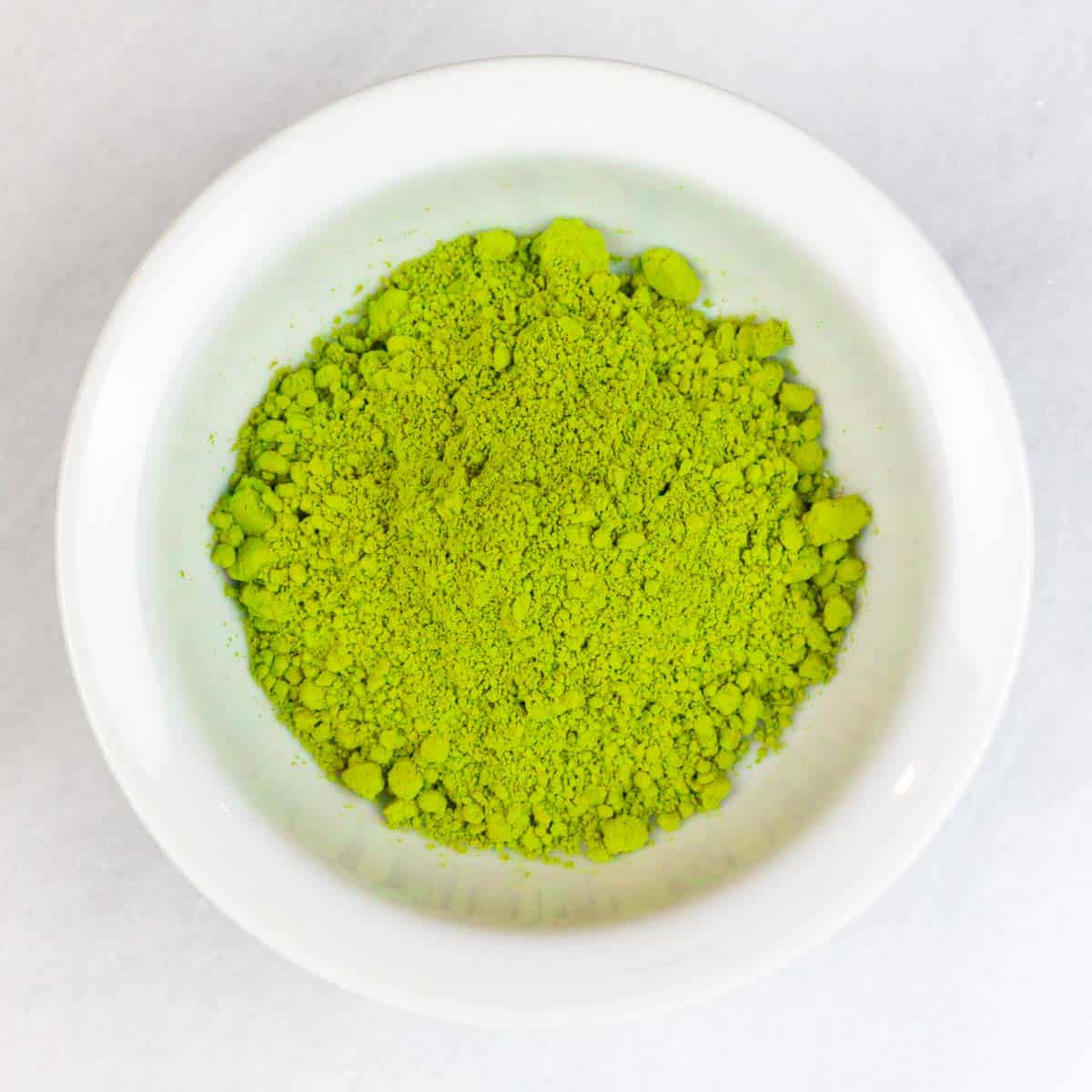
What is matcha?
Matcha is a finely ground powder made from processed whole green tea leaves. The green tea plant used to make matcha is grown in shade, rather than full sun, to create an overproduction of chlorophyll, which contributes to its vibrant green color and high amino acid content.
Matcha is mostly consumed as a tea or used in cooking and is a natural green food coloring.
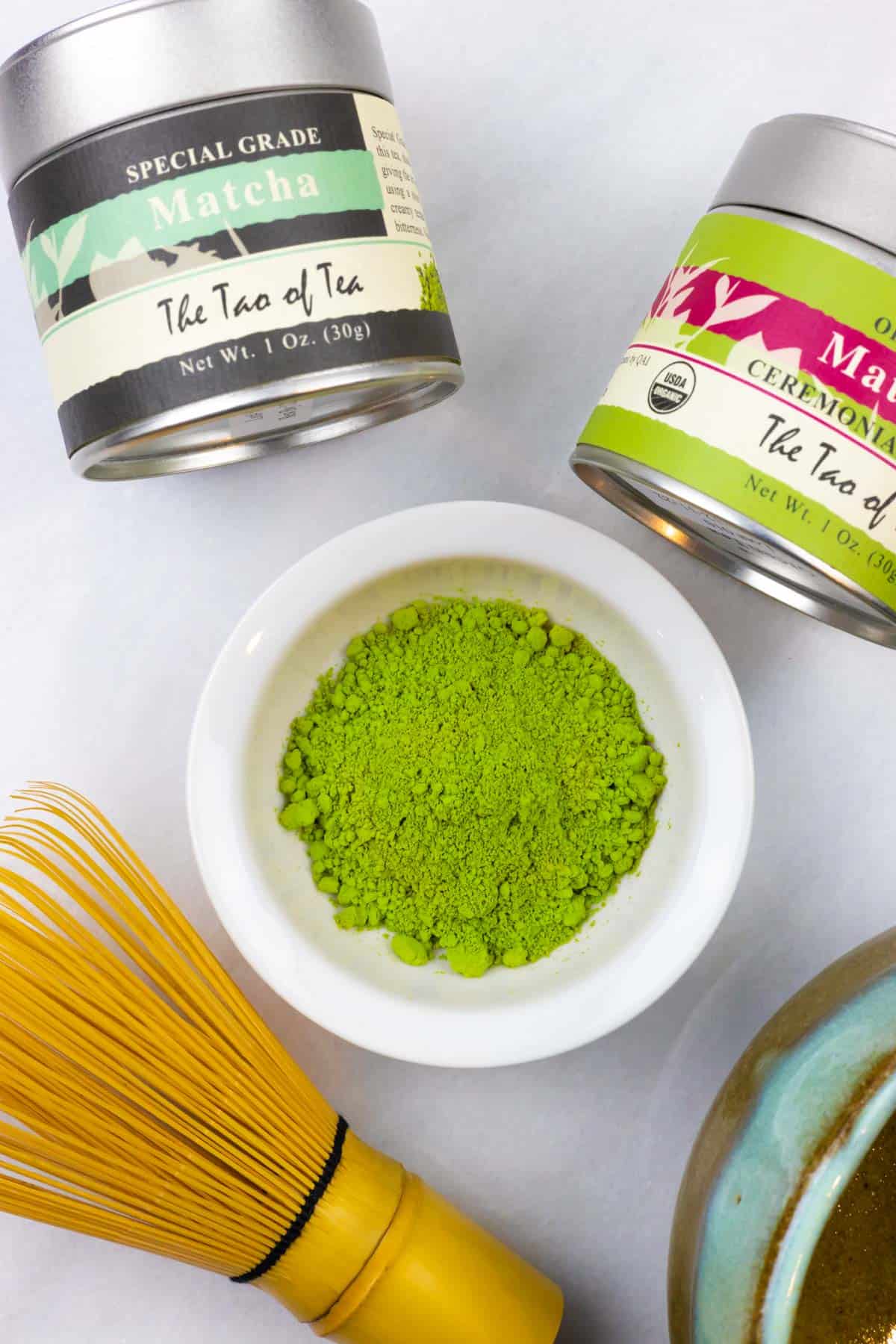
Matcha varieties
There are a few varieties or ‘grades’ that indicate the quality of the tea:
- Ceremonial grade – is tea that is used in ceremonies and temples. It is whisked into water to make a thick tea that is consumed in traditional tea ceremonies. This is the highest quality with the most balanced flavor. It is also the most expensive.
- Special or premium grade – is also high quality tea, intended for everyday consumption. Its flavor is delicate, fresh, subtle and grassy. Like ceremonial grade, these leaves are harvested from the upper part of the plant.
- Culinary or food grade – the leaves come from the lower part of the plant and are not as high quality as special or ceremonial grade leaves. This is the most bitter variety and is intended for use in cooking and smoothies, where it will be combined with other ingredients that mask the bitter qualities, while still imparting a fresh green tea flavor to the recipe.
I love to use teas from The Tao of Tea. They're a local, Portland company with some of the best quality teas in the world. Purchase teas directly from their website, or find it on Amazon.
Is matcha FODMAP-friendly?
Green tea is considered to be low-FODMAP and may even ease the process of digestion. Since matcha powder is simply powdered whole green tea leaves, it is considered to be an excellent low-FODMAP tea. It adds a unique spin to low-FODMAP baking ideas, like these spectacular FODMAP-friendly cookies.
If you're looking for more low-FODMAP desserts, be sure to stop by my low-FODMAP category for tasty treats and other FODMAP-friendly recipes.
What does matcha taste like?
This tea has a deep, delicate, sweet, grassy flavor with just a touch of bitterness. The sweet and umami flavor is due to the higher level of the amino acid, L-theanine.
Higher grades, such as ‘special’, ‘premium’ or ‘ceremonial’ matcha, have a sweeter, more pronounced umami flavor than the culinary grade, which is lower in L-theanine. This lends to its slight bitterness and is the primary reason the culinary grade is more suitable for cooking, rather than drinking.
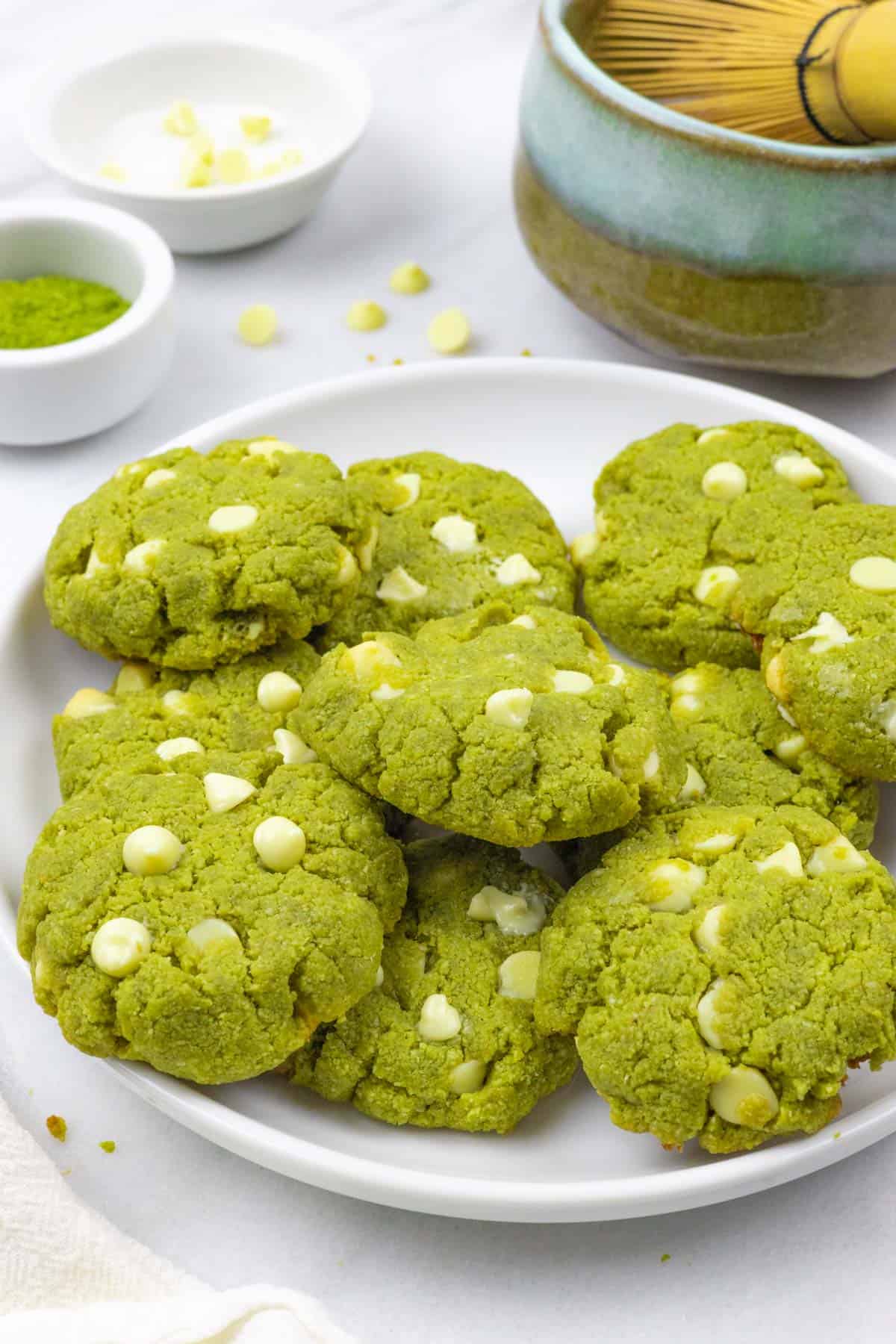
How to make matcha taste good
While some people say that matcha is an acquired taste, if it’s prepared correctly and you use a high quality tea, it will have much less of a bitter flavor. However, using even the lower quality grades in baked goods is a perfect way to make this green tea powder taste great.
Typically, sweetening matcha helps to make it more palatable. It pairs very well with milk chocolate, dark chocolate and white chocolate.
Matcha tea benefits
Matcha can be very good for your health, due to its unique nutrient profile. The entire leaf is consumed, resulting in a higher amount of antioxidants and caffeine than regular green tea.
- High in antioxidants – these neutralize free radicals that can damage cells and can aid in reducing inflammation and preventing chronic disease. Matcha is also a good source of vitamin C.
- Rich in catechins – which are flavonoids that have antioxidant properties, are beneficial to cells and may have anticancer effects
- Reduces cholesterol and triglycerides – green tea has been shown to reduce levels of LDL cholesterol and triglycerides, reducing the risk of heart disease and stroke
- Matcha green tea for weight loss – green tea has also been shown to help increase metabolism, fat burning during exercise and helps to maintain weight loss
Higher grades of tea will contain higher amounts of nutrients. Usually, less expensive tea will be an indicator of its quality and nutrient concentration.
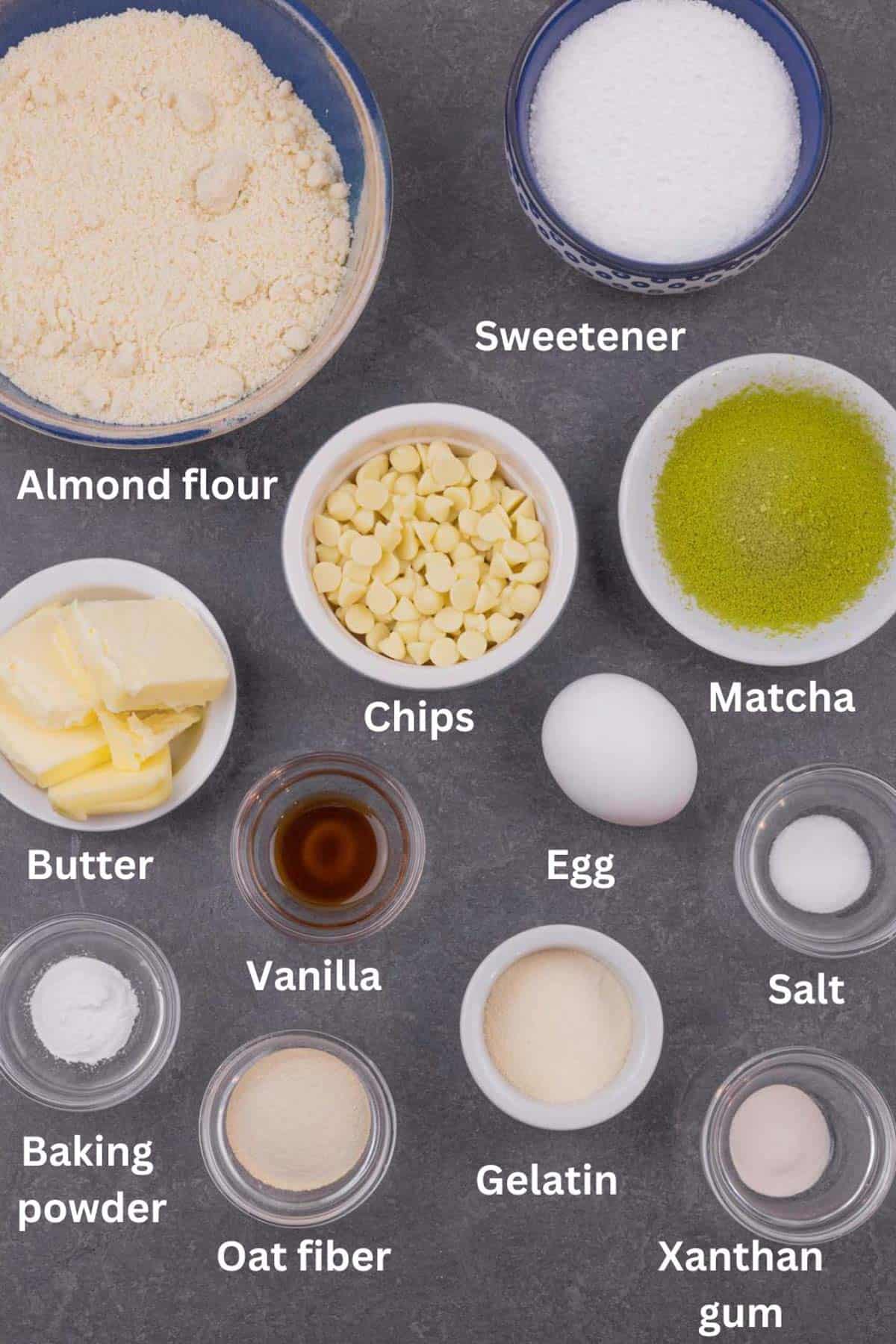
Ingredients
These cookies contain a variety of healthy ingredients that come together to make the best chewy gluten-free cookies.
- Almond flour – a great gluten-free flour that is perfect for cookie recipes
- Sweetener – I like to use powdered stevia, but other sweeteners such as monk fruit, allulose or erythritol work well. To make paleo-friendly cookies, you can use a paleo-friendly sweetener like stevia, maple sugar or coconut sugar.
- White chocolate chips – there are many sugar-free white chocolate chips available that are so, so good. I love to use either Choc Zero White Chocolate Chips or Lily’s White Chocolate Chips. If you want to make these paleo-friendly, try making your own paleo white chocolate. Or, you can easily use dark chocolate in these cookies, as well.
- Butter – I find that grass-fed provides the best flavor. For paleo, use your favorite butter substitute.
- Egg – just one does the trick
- Matcha powder – sifted (see info about sifting matcha below). Also see my description about different grades of matcha to use. I like to use special or ceremonial grade for the best flavor, but culinary grade will also be just fine.
- Vanilla extract – adds a touch of flavor
- Baking powder – to give just a little lift
- Salt – creates some baking chemistry magic
And for the three ingredients that make the best chewy almond flour cookies:
- Gelatin powder – gives cookies a fantastic soft and chewy texture. No need to bloom it – just add the powder to the batter and mix in. And, it’s a healthy addition, contributing an additional dose of amino acids.
- Oat fiber – gives some texture and structure and contributes to a great chew, with zero carbs
- Xanthan gum – also adds to the soft, chewy texture. Not familiar with xanthan gum? Learn all about it in my What is Xanthan Gum Ingredient Spotlight.
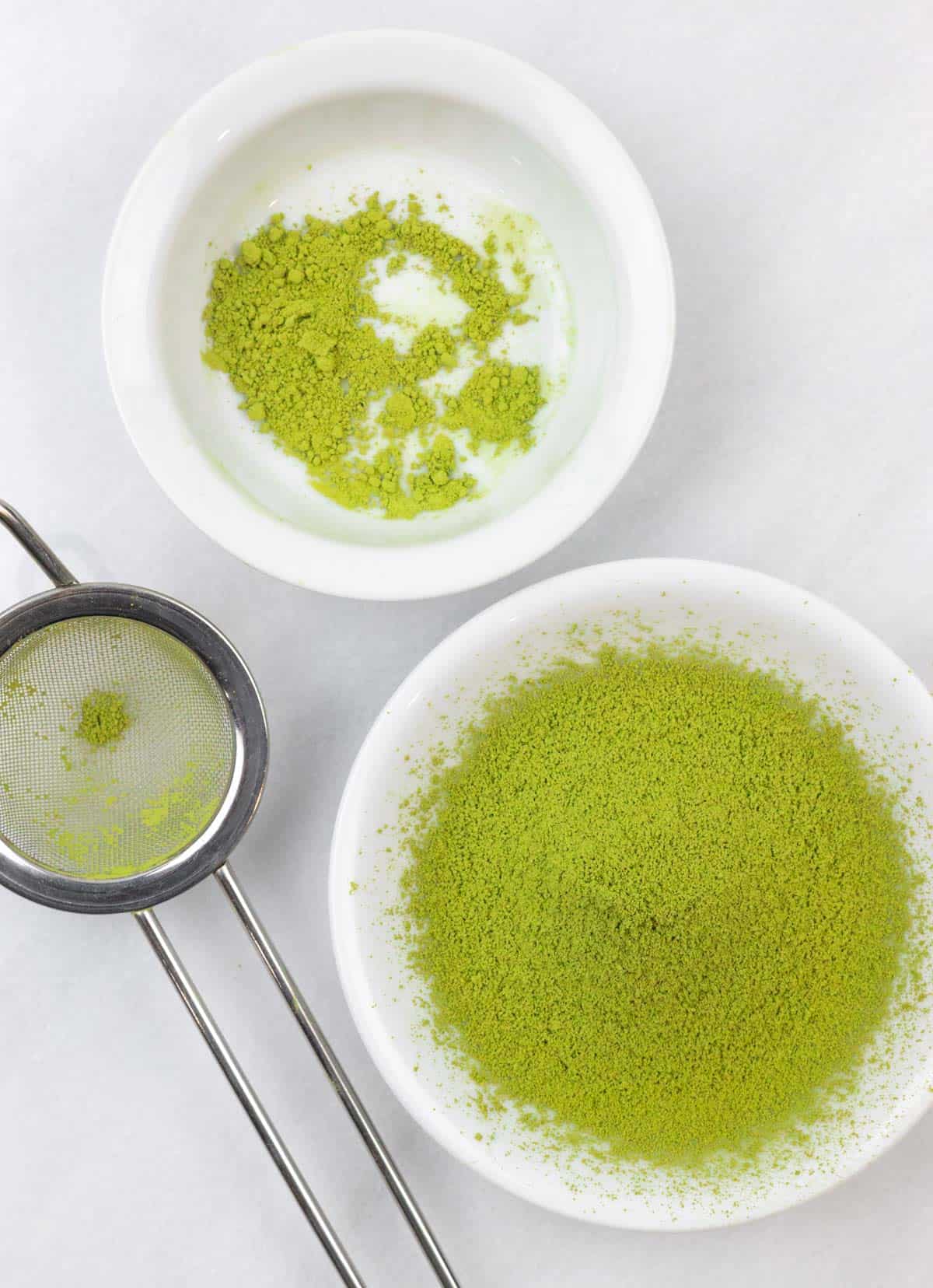
Why do you need to sift matcha powder?
Matcha naturally will become slightly clumpy when stored. Sift to break up clumps and evenly distribute the tea throughout the batter.
Sifting it is very easy. Simply press it through a small strainer.
Instructions
This is a very fast and easy cookie recipe! You'll love how simple it is to make these beautiful cookies.
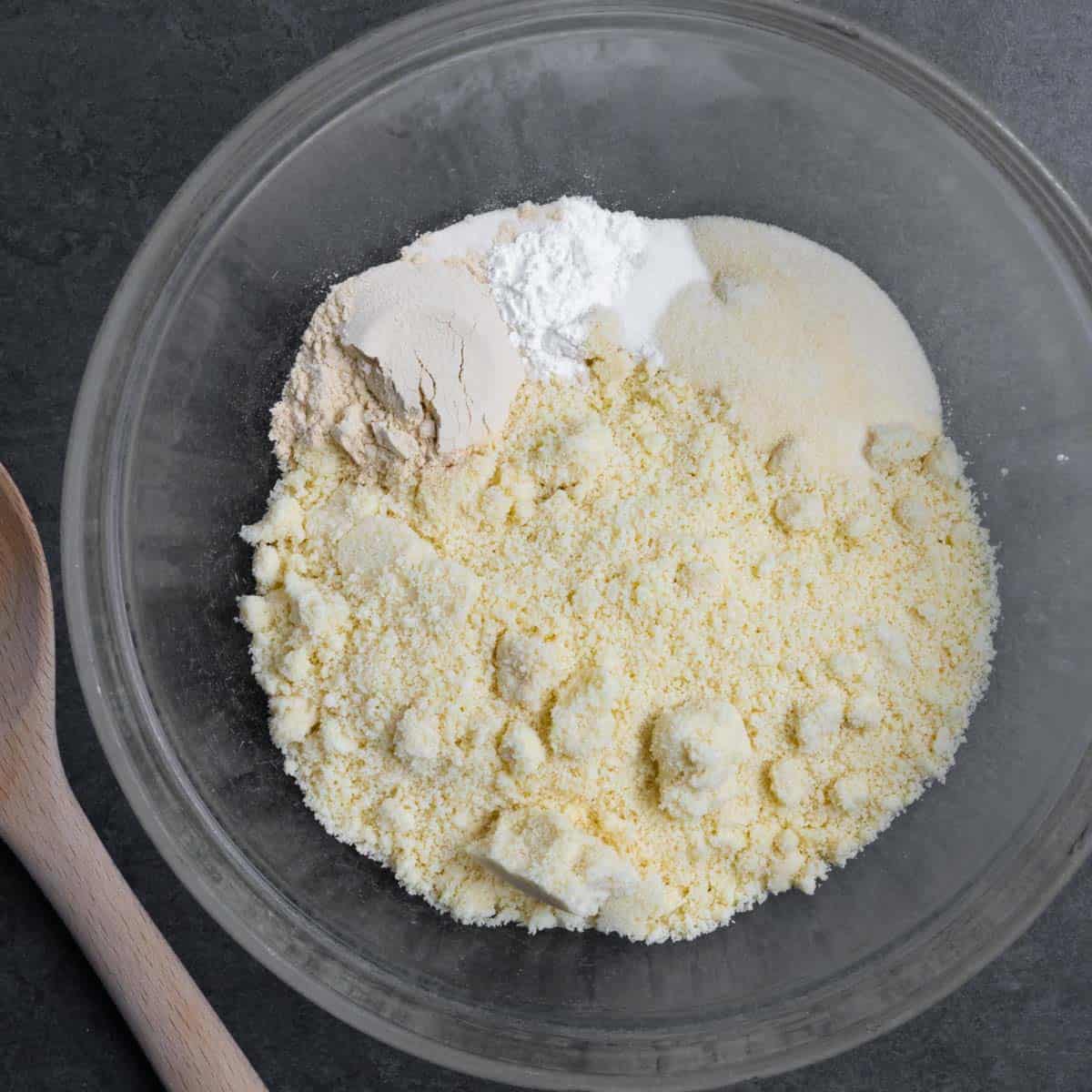
In a medium sized bowl, combine the almond flour, baking powder, salt, gelatin, oat fiber and xanthan gum.
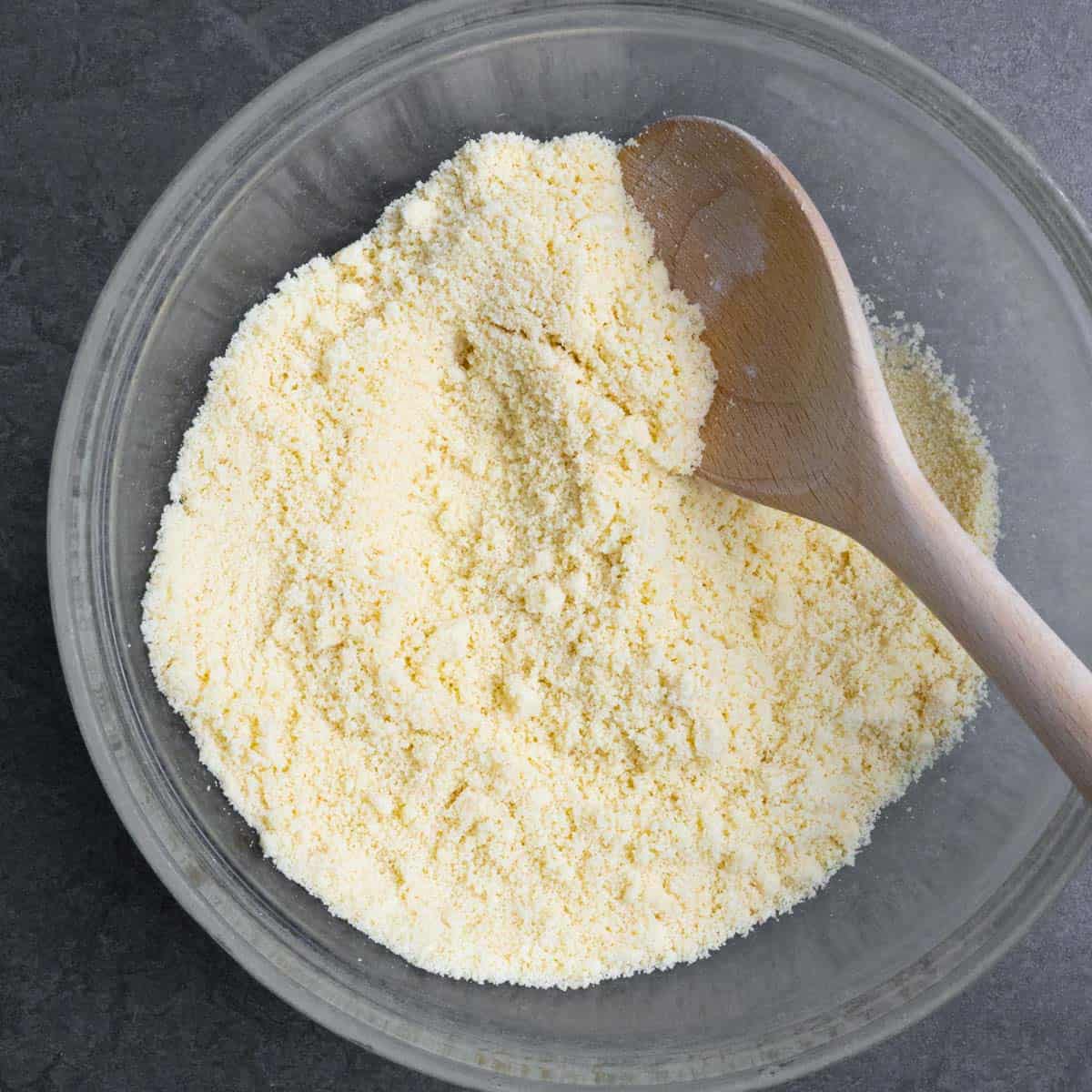
Mix until thoroughly combined.
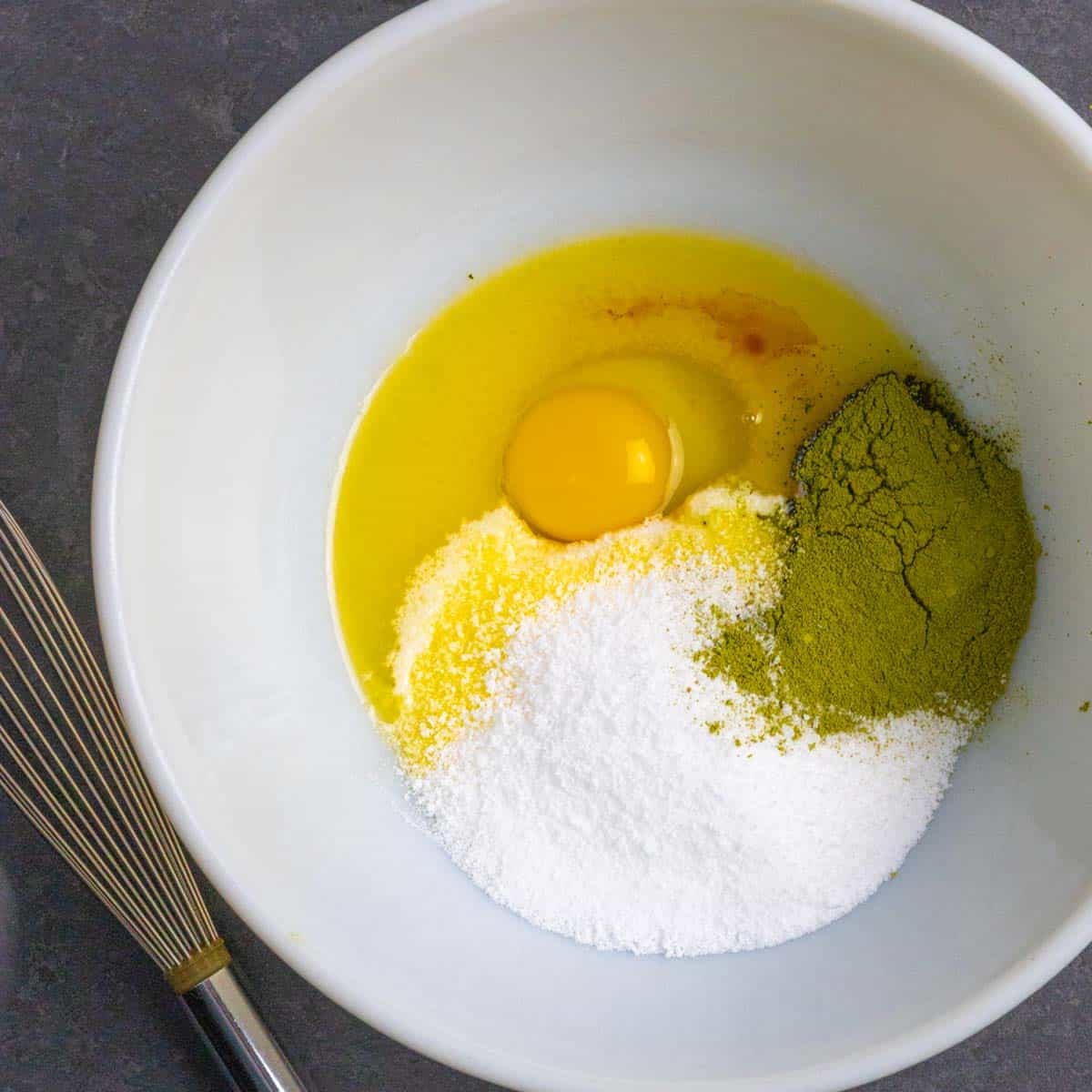
Melt the butter and pour into a large mixing bowl or melt it in the bowl in the microwave (this takes between 20-30 seconds). Then, add the egg, sweetener, vanilla and sifted matcha to the bowl with the melted butter.
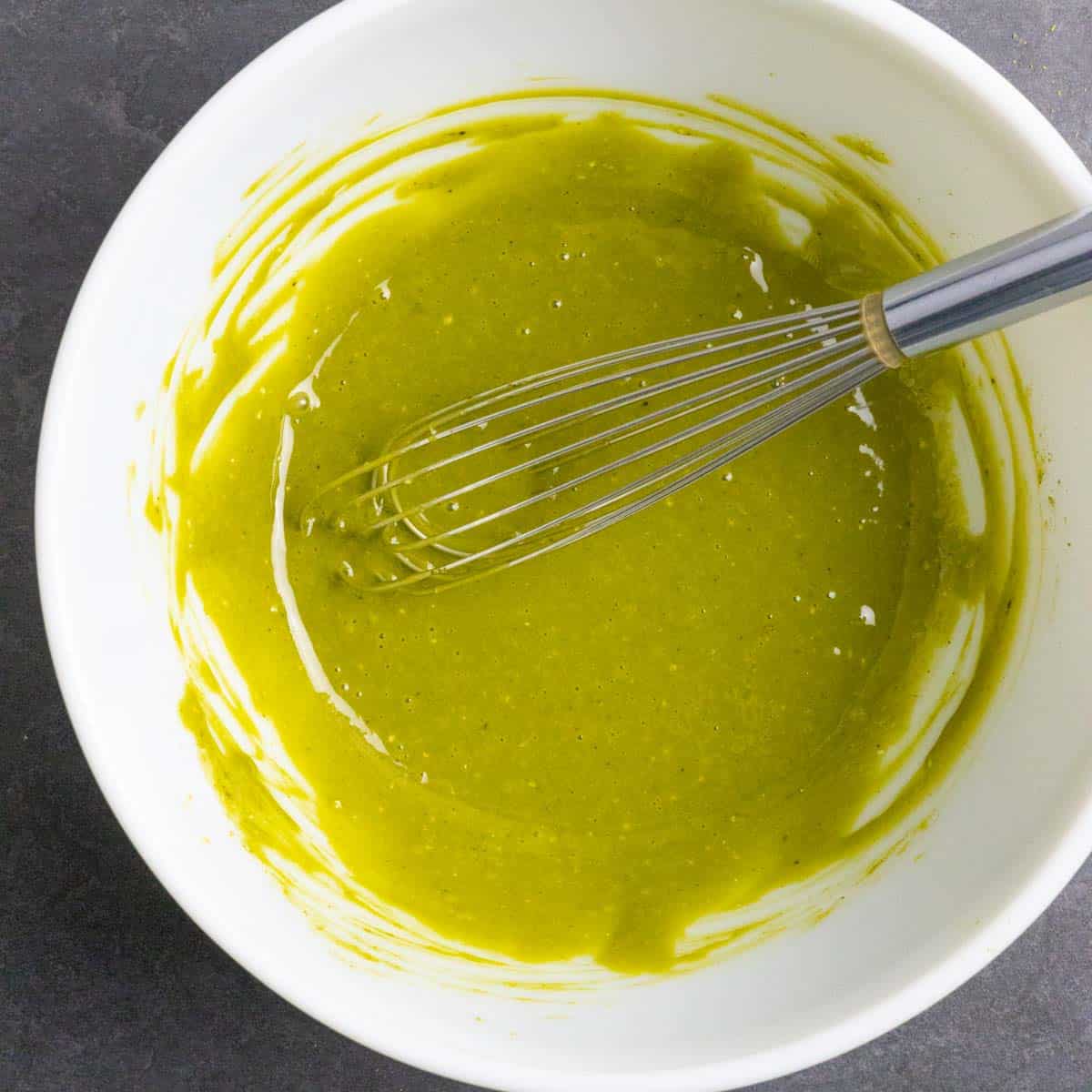
Whisk or stir until thoroughly combined.
TIP: Make sure the melted butter is not too hot or it may slightly cook the egg when it gets added.
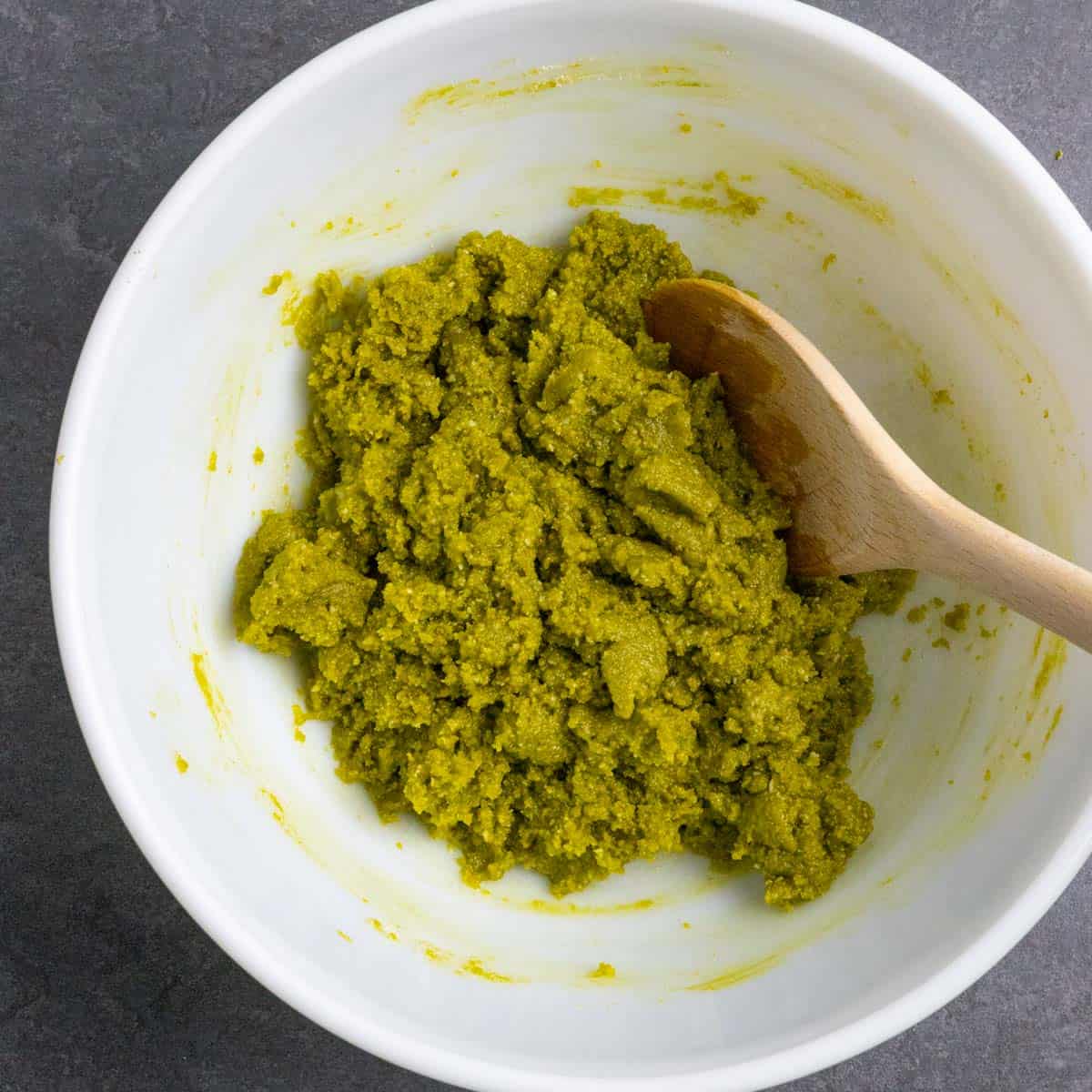
Combine the dry ingredients with the wet and mix.
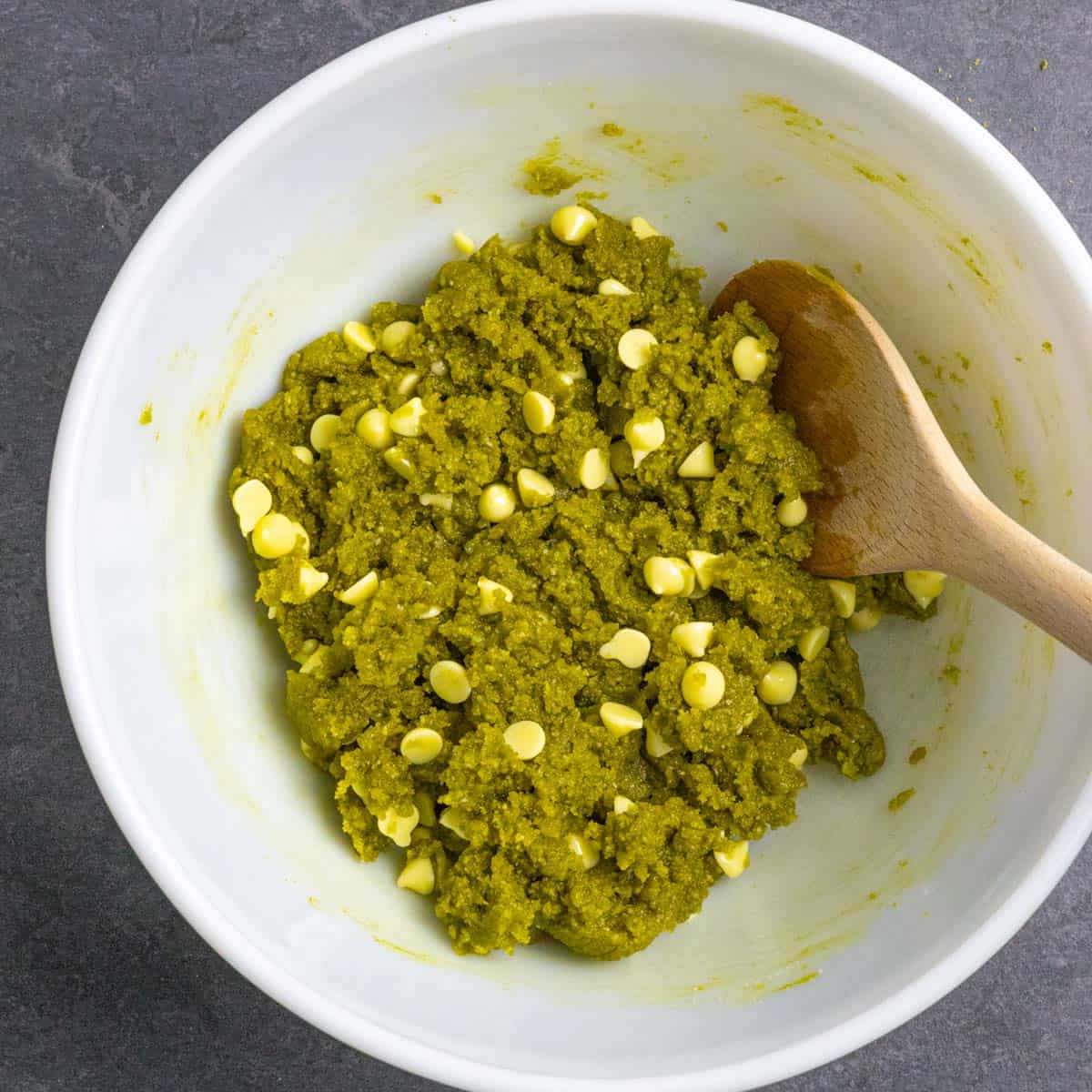
Add the chips and mix again.
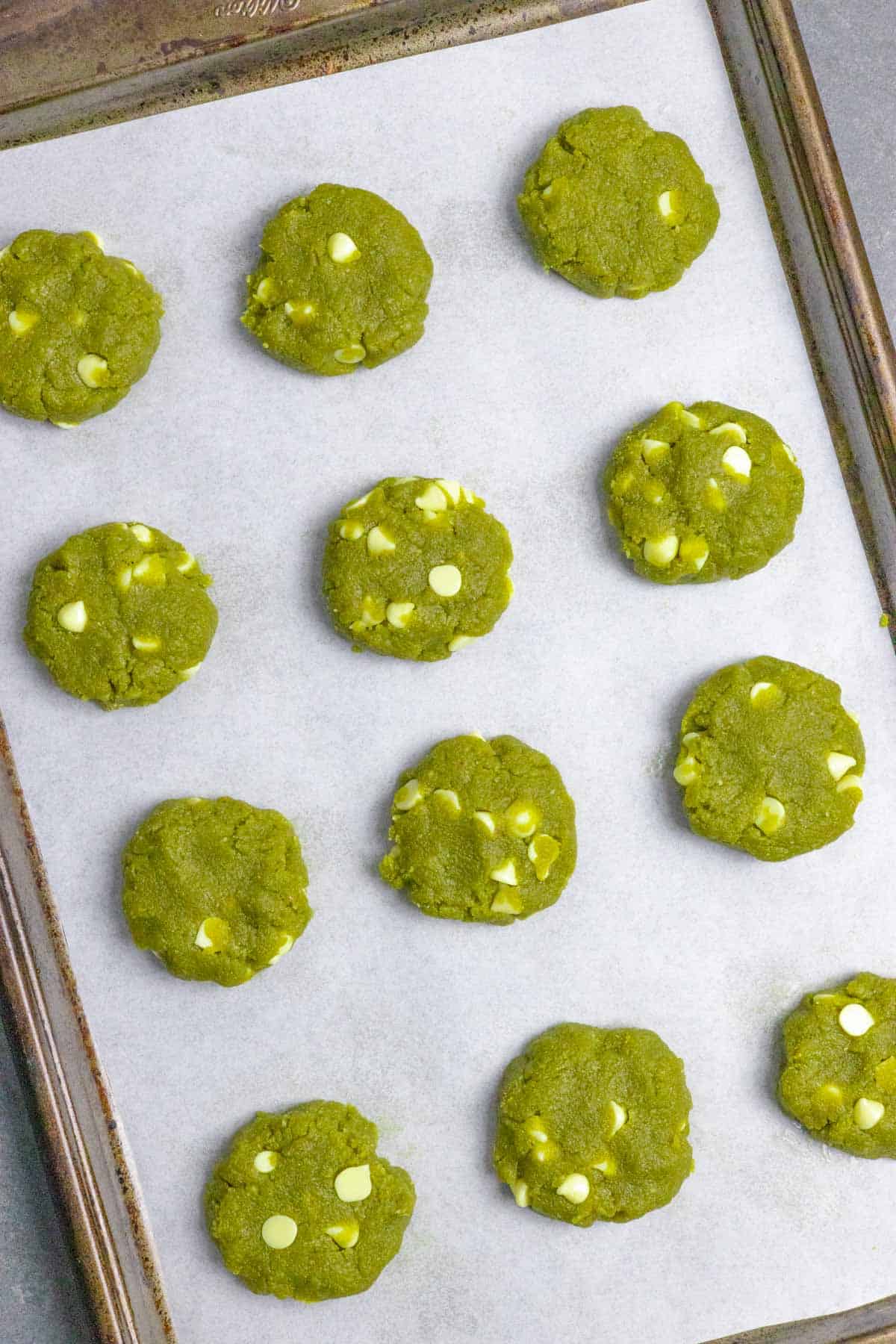
Roll into 1 inch balls, then flatten slightly. Feel free to add a few more chips to the tops of the cookies. Just be sure to gently press them into the formed cookies so they won't fall off.

Bake for 12 minutes, until set, then let cool.
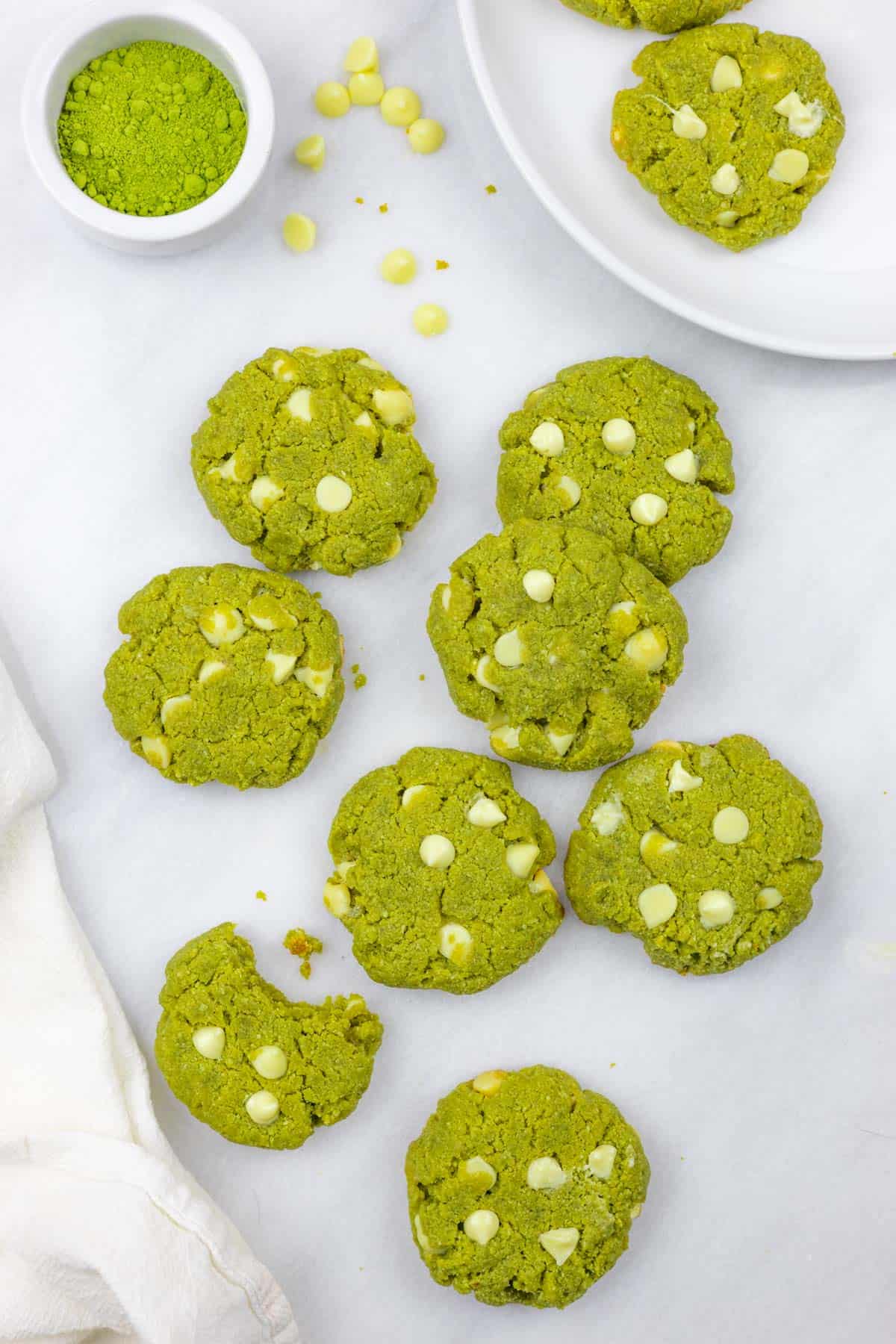
Variations and add-ins
There are a few things you can do to customize your cookies:
- Use different chips – add milk chocolate, strawberry chips or dark chocolate chips instead of white chocolate chips. Or leave them out altogether.
- Add nuts – stir in some chopped macadamia nuts or cashews
- Brown the butter – instead of just melting the butter, try browning it first to add an extra nutty flavor
How to store
Store almond flour cookies in a sealed container in the refrigerator for up to 7 days or consider freezing.
Freeze them in a single layer on a sheet pan. Then place them in a freezer bag and freeze for up to three months.
FAQ
Yes. Since this tea is produced from whole tea leaves, it has a bit more caffeine than brewed green tea, but it depends on how much is consumed in a serving. Caffeine in matcha is absorbed at a slower rate, due to its high content of the amino acid, L-theanine. That's why you can usually drink a cup of matcha without getting the jitters.
Based on an 8oz cup, brewed coffee wins. ½ teaspoon of matcha powder contains about 34mg of caffeine, compared to about 28mg present in a cup of brewed green tea. A cup of coffee can have as much as 100mg of caffeine in an 8oz cup.
While the answer can be a bit controversial, it is said that matcha’s origins can be traced back as early as the 7th century, during the Tang Dynasty, in China. It was introduced to Japan around the same time, over 800 years ago. However, the Japanese have perfected the preparation and ritual surrounding this tea, making it a traditional Japanese beverage.
Matcha powder can be used in many recipes, including baking. However, it can change to a brown color when exposed to high heat for too long or when used in baked goods containing high amounts of sugar.
Two main reasons why matcha cookies may turn brown is due to prolonged baking times and using larger amounts of sugar. Making low-carb cookies using a sugar-free sweetener keeps them a beautiful, bright green.
Stored matcha can naturally turn brown when exposed to heat and air, so it’s best to keep it in an air tight, sealed container and store in a cool, dark place.
Some matcha products add ingredients to help the powder retain its green color, even when baked for longer periods. Make sure to check the ingredient list for additives and consider purchasing a 100% organic product.
After the leaves are harvested, they are rolled, laid out to dry, destemmed and deveined, then slowly stone-ground into a fine powder.
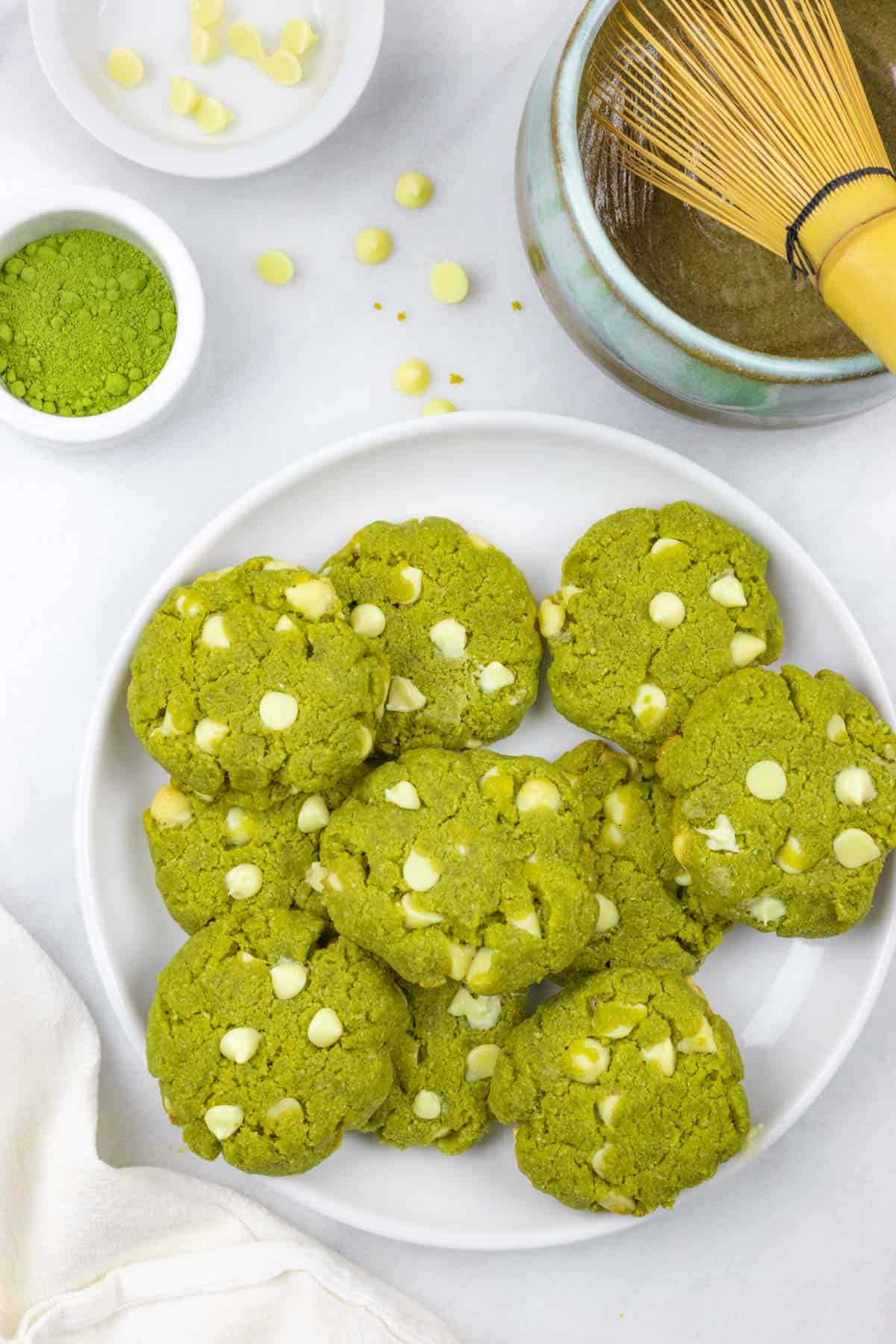
Did you make this melt-in-your-mouth cookie recipe? Let me know how you liked it by leaving a star rating and a comment!
📖 Recipe
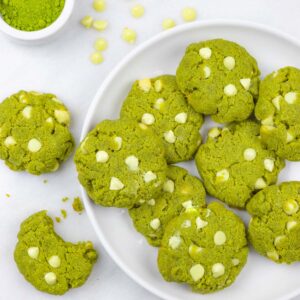
Matcha White Chocolate Cookies with Almond Flour
Ingredients
- 2 cups almond flour (finely ground is best)
- 1 cup powdered stevia (or sweetener of choice)
- ½ cup butter (salted - or use butter alternative of choice)
- 1 tablespoon matcha powder (sifted - see notes. Use the highest grade possible.)
- 1 egg
- 1 tablespoon oat fiber (for amazing cookie texture and chew)
- 2 teaspoons gelatin powder (also for amazing cookie texture and chew)
- 1 teaspoon vanilla extract
- ½ teaspoon baking powder
- ¼ teaspoon salt (fine sea salt is best)
- ½ teaspoon xanthan gum (optional, but helps create texture and chew. Learn more in my What is Xanthan Gum Ingredient Spotlight.)
- ½ cup sugar-free white chocolate chips
Instructions
- Pre-heat the oven to 325 °F.
- Line a baking sheet with parchment.
- In a medium sized bowl, combine the almond flour, baking powder, salt, gelatin, oat fiber and xanthan gum and mix until thoroughly combined.
- Melt the butter and pour into a large mixing bowl or melt it in the bowl in the microwave (this takes between 20-30 seconds).
- Add the egg, sweetener, vanilla and sifted matcha in the bowl with the melted butter and whisk or stir until thoroughly combined.
- Combine the dry ingredients with the wet and mix.
- Add the chips and mix again.
- Roll into 1 inch balls, place onto the baking sheet, then flatten slightly.
- Bake for 12 minutes until set, then let cool.
Notes
Sifting matcha powder
Matcha naturally will become slightly clumpy when stored. Sifting the tea will allow the powder to be evenly distributed throughout the batter. Sifting it is very easy. Simply press it through a small strainer.Variations and add-ins
There are a few things you can do to customize your cookies:- Try different chips – use milk chocolate, strawberry or dark chocolate chips instead of white chocolate chips. Or, add no chips at all.
- Add nuts – stir in some chopped macadamia nuts or cashews
- Brown the butter – instead of just melting the butter, try browning the butter first to add an extra nutty flavor
How to store
Store almond flour cookies in a sealed container in the refrigerator for up to 7 days or consider freezing. Freeze them in a single layer on a sheet pan. Then place them in a freezer bag and freeze for up to three months.Nutrition
*Net carbs = carbohydrates - fiber
Nutritional information is an estimate, calculated using online tools and does not include optional ingredients unless otherwise indicated.

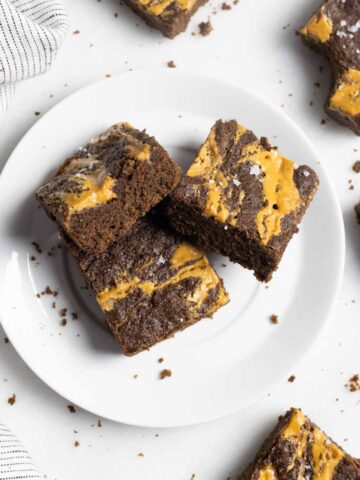
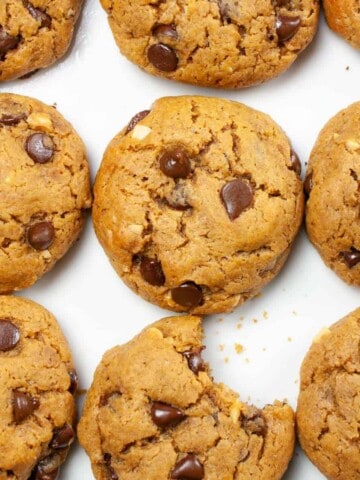

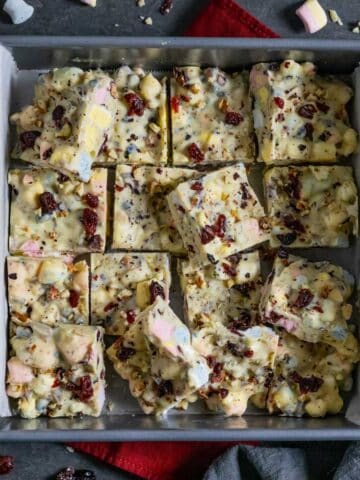
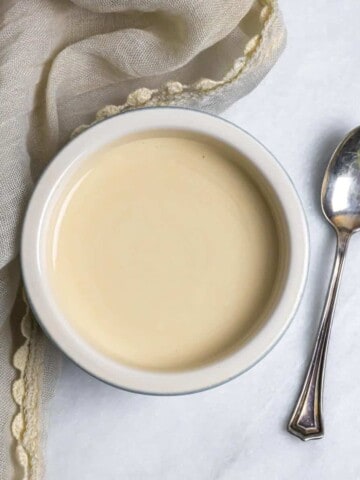

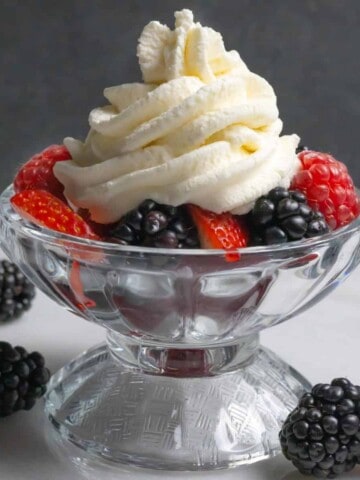
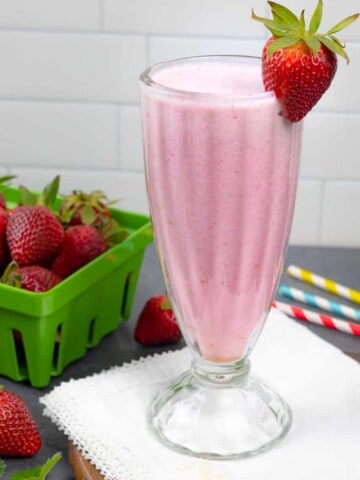
Fran Longo says
Delious chewy matcha cookie.
Tracey Hatch-Rizzi says
Hi Fran,
I'm so glad you liked these cookies! They're definitely one of my favorites.
Take care,
Tracey